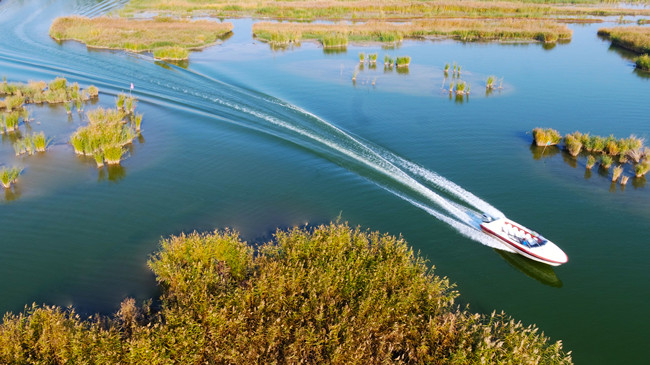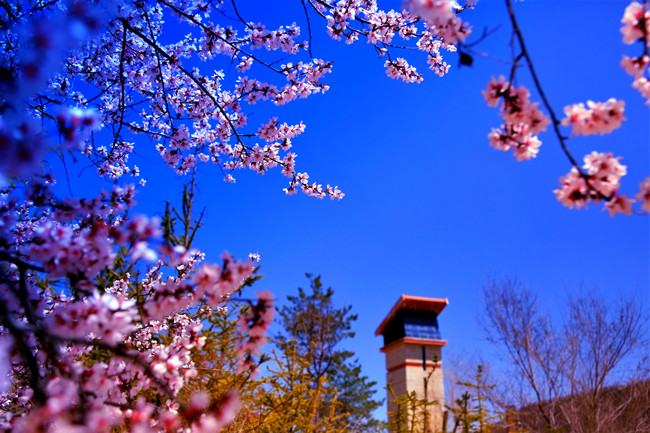Established in 1958, the Ningxia Hui autonomous region covers an area of 66,400 square kilometers. It has a permanent resident population of 6.9 million, 36.69 percent of whom are people of the Hui ethnic group. Ningxia is China's largest residential area for the Hui ethnic group, administrating five prefecture-level cities and 22 counties and cities (districts).
Natural condition
All regions of Ningxia are over 1,000 meters above sea level. Its terrain is more elevated in the south and less in the north. Ningxia has a typical continental climate, windy and dusty in spring, not especially hot in summer, cold in winter and with sufficient sunshine in all four seasons. Its average annual precipitation is about 300 mm.
Geographical division
Ningxia is geographically divided into three areas: the northern part is an irrigated area with flat terrain and fertile soil. The central area is an arid zone noted for heavy winds and sandy and barren soil, which makes living conditions there poor. The south is a mountainous area with many hills and ravines that can be wet and cold.
History
Ningxia is one of the origins of ancient Chinese civilization. The Shuidonggou relic site in Lingwu city shows that people resided there as early as 30,000 years ago, the Old Stone Age. After the First Emperor of Qin (221-206BC) unified the six states, the place became a prefecture and its soil was reclaimed and irrigated by the Yellow River. In 1038, Li Yuanhao set up the Western Xia regime (1038-1227), with Ningxia as its center. In 1929, Ningxia was designated a province. Following the founding of the People's Republic of China Ningxia's provincial status was revoked in 1954 and it was included in Gansu province. In 1958, the Ningxia Hui autonomous region was established.
Superior resources
Ningxia has superiority in agriculture, energy and tourism. Ningxia has 1.1 million hectares of farmland, ranking second in the country. Its Yellow River irrigation area is 527,000 hectares, and is one of 12 commodity grain production bases in China. Its grasslands cover 2.44 million hectares, making it one of the top 10 pastoral areas in China. Each year, 4 billion cubic meters of Yellow River water is available in Ningxia. It has coal reserves of 46.9 billion tons and 20 large and medium-sized thermal power stations, and ranks first in China for per capita power generation and more than 50 kinds of mineral resources. Ningxia has colorful tourism resources, including displays of ancient Yellow River civilization and of the mysterious history of the Western Xia regime, magnificent desert scenery, two mountains (Helan Mountain and Liupan Mountain) and one river (the Yellow River), the Shahu Lake and Shapotou (Top of the Sand Slope) Tourist and Scenic Zone, the Western Xia Imperial Tombs, two fortresses (Jiangtai Fortress and Zhenbei Fortress), and sections of the ancient Great Wall.

Scenery of Shahu Lake, a national 5A-level scenic spot in Shizuishan, Ningxia Hui autonomous region. [Photo provided to seeningxia.com]
Over the past five years, Ningxia has taken many efforts to stabilize economic growth, adjust structure, change economic power sources and promote high quality development. By 2020, its annual GDP had doubled over that of 2010, with average annual growth of 6.4 percent, 0.7 percentage point higher than the rest of the country. Per capita disposable income for urban and rural residents has doubled from 2010, at average annual growth rates of 7.2 percent and 8.8 percent, respectively, 0.2 and 0.4 percentage points higher than the rest of the country.
Over the past five years, Ningxia has focused on the goal of comprehensively building a well-off society. Its nine previously impoverished counties and 1,100 poor villages and 624,000 impoverished people have been lifted out of poverty.
2021 is the first year of the 14th Five-Year Plan (2021-25). Ningxia will continue to dedicate itself to boosting ecological protection of the Yellow River Basin and high quality development of pilot areas, and to contributing to economic prosperity, ethnic unity, a beautiful environment and people's well-being.

Peach blossom in Laolongtan, 20 kilometers southwest of Jingyuan county, Guyuan city. [Photo provided to seeningxia.com]